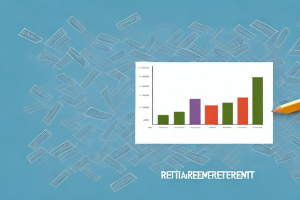Understanding the basics of retirement planning
Retirement planning is an essential part of securing your financial future. It involves careful consideration of your goals, financial readiness, and various factors that can impact your retirement savings. One common question people have is whether they can retire with $1 million dollars at 55. To answer this question, you need to understand the basics of retirement planning.
One important aspect of retirement planning is determining your desired retirement lifestyle. This includes considering factors such as where you want to live, the activities you want to pursue, and the level of financial security you desire. By understanding your retirement goals, you can better estimate the amount of money you will need to save.
Another key factor in retirement planning is understanding the different types of retirement accounts available to you. These can include employer-sponsored plans such as 401(k)s or individual retirement accounts (IRAs). Each type of account has its own rules and regulations, as well as potential tax advantages. It is important to research and understand these options to make informed decisions about your retirement savings.
Assessing your financial readiness for retirement
Before determining if you can retire with $1 million dollars at 55, it’s crucial to assess your overall financial readiness. This involves evaluating your existing savings, investments, and other potential sources of retirement income. Consider factors such as your current age, desired retirement age, and expected lifestyle expenses during retirement.
It’s also important to review your liabilities and debts, as these can affect your retirement savings. Paying off high-interest debts, such as credit card balances or loans, can significantly improve your financial situation and increase the chances of retiring with a comfortable nest egg.
Another important aspect to consider when assessing your financial readiness for retirement is your healthcare expenses. As you age, healthcare costs tend to increase, and it’s essential to factor in these expenses when planning for retirement. Research different healthcare options, such as Medicare or private health insurance, and estimate the potential costs you may incur.
In addition to evaluating your financial situation, it’s also beneficial to seek professional advice from a financial planner or retirement specialist. These experts can provide personalized guidance based on your specific circumstances and help you create a comprehensive retirement plan. They can assist in analyzing your current assets, projecting future income, and identifying potential gaps in your retirement savings.
Setting realistic retirement goals
Setting realistic retirement goals is vital to determine whether you can retire with $1 million dollars at 55. Consider your desired lifestyle during retirement and estimate the annual expenses you’ll need to cover. Think about factors such as housing, healthcare, travel, and leisure activities.
It’s essential to take into account inflation, as its impact can erode your purchasing power over time. Adjust your retirement savings goal accordingly to ensure you have enough funds to maintain your standard of living throughout your retirement years.
Evaluating the impact of inflation on retirement savings
Inflation can significantly affect your retirement savings. Over time, the cost of goods and services tends to increase, reducing the purchasing power of your savings. When estimating your retirement needs, it’s important to consider inflation and factor it into your calculations.
Consulting historical inflation rates and projecting future inflation trends can assist you in understanding the impact on your retirement savings. Speak with a financial advisor or use inflation calculators to help you determine how much you’ll need to save to combat the effects of inflation.
How to calculate your retirement needs
Determining how much you need to retire comfortably requires careful calculation. Start by estimating your annual expenses during retirement and consider how many years you expect to be in retirement. Multiply your annual expenses by the number of years to get an approximate total amount needed.
Remember to consider other potential sources of income, such as Social Security, pensions, or other investments that you may have. Subtract these from your total amount needed to determine how much you need to save independently. Use retirement calculators or seek professional advice to get a more accurate estimate based on your specific circumstances.
Exploring different retirement income strategies
Creating a retirement income strategy is essential to ensure your financial security after you retire. There are various strategies you can explore to optimize your retirement income. Some popular options include relying on investment earnings, annuities, rental income from properties you own, or a combination of different income sources.
It’s important to diversify your income streams to reduce risk and ensure a stable cash flow during retirement. Speak with a financial advisor knowledgeable in retirement planning to help you develop a strategy that aligns with your goals and risk tolerance.
Maximizing your Social Security benefits in retirement
Social Security benefits can play a crucial role in your retirement income. To maximize your benefits, consider factors such as the age at which you decide to start receiving benefits and your work history.
Delaying your Social Security benefits past your full retirement age can increase your monthly benefit amount, while starting early can result in a reduced monthly payment. It’s important to weigh the pros and cons based on your individual situation and anticipated financial needs.
Diversifying your investment portfolio for a secure retirement
A well-diversified investment portfolio is essential for a secure retirement. By spreading your investments across different asset classes, such as stocks, bonds, and real estate, you can reduce the risk of solely relying on one type of investment.
Consider consulting with a financial advisor to help you create a diverse portfolio that aligns with your risk tolerance, financial goals, and retirement timeline. Regularly review and rebalance your investments to ensure they remain aligned with your long-term objectives and market conditions.
The role of healthcare costs in retirement planning
Healthcare costs are a significant consideration in retirement planning. As you age, medical expenses tend to increase, potentially impacting your retirement savings. It’s crucial to factor in healthcare costs when determining your retirement needs.
Consider Medicare and supplemental insurance options to help cover medical expenses. It’s also wise to maintain a healthy lifestyle and prioritize preventive care to minimize potential healthcare costs during retirement.
Considering the impact of taxes on your retirement savings
Taxes can have an impact on your retirement savings and income. It’s important to understand how different retirement accounts, such as Traditional IRAs and Roth IRAs, are taxed. Consulting with a tax professional or financial advisor can help you navigate the tax implications and optimize your overall retirement plan.
Developing a comprehensive retirement savings plan
To retire with $1 million dollars at 55, developing a comprehensive retirement savings plan is key. This plan should consider all the aforementioned factors, including your goals, current financial situation, projected expenses, and investment strategies.
It’s advisable to work with a financial advisor who specializes in retirement planning to help you create a personalized plan tailored to your specific circumstances and goals.
Strategies for saving and investing to reach $1 million by 55
If your goal is to retire with $1 million dollars by 55, you need to implement effective saving and investing strategies. Start by setting a realistic savings goal and creating a budget to control your expenses.
Consider automating your savings by setting up regular contributions to retirement accounts, such as 401(k)s or IRAs. Take advantage of employer matching contributions and maximize your tax-advantaged retirement accounts to accelerate your savings growth.
When investing, diversify your portfolio and understand your risk tolerance. Consider a mix of stocks, bonds, and other investments, based on your time horizon and financial goals. Regularly review and adjust your investment strategy as needed to stay on track towards your $1 million retirement goal.
Exploring different investment options for building wealth
There are various investment options available to help you build wealth and reach your retirement savings goal. These include stocks, bonds, mutual funds, real estate, and more.
Research and educate yourself on different investment options, their potential returns, and associated risks. Consider working with a financial advisor to help you develop an investment strategy that aligns with your goals and risk tolerance.
Managing and minimizing debt before and during retirement
Managing and minimizing debt is crucial both before and during retirement. High levels of debt can hinder your ability to save for retirement and place a strain on your financial security.
Prioritize paying off high-interest debts, such as credit cards or personal loans, to free up more funds for retirement savings. Minimizing debt before retirement can also help reduce your monthly expenses, making it easier to maintain your desired lifestyle during retirement.
Determining an appropriate withdrawal rate from your savings
During retirement, it’s essential to determine an appropriate withdrawal rate from your savings. This refers to how much money you can safely withdraw each year without running out of funds.
The often-cited guideline is the 4% rule, which suggests withdrawing 4% of your initial retirement savings each year. However, individual circumstances may require adjusting this rate. Work with a financial advisor to determine a withdrawal rate that suits your specific situation, goals, and risk tolerance.
Understanding the potential risks and rewards of early retirement
Early retirement can be an enticing idea, but it’s important to understand the potential risks and rewards before making this decision. Retiring early means relying on your savings for a more extended period, which increases the potential for your funds to deplete over time.
Consider the impact of inflation, unexpected expenses, and changes in your financial circumstances. Evaluating the potential risks and rewards can help you make an informed decision about whether you can retire with $1 million dollars at 55 or if you may need to adjust your retirement goals.
Balancing risk tolerance with investment returns in retirement planning
As you plan for retirement, it’s vital to balance your risk tolerance with the potential investment returns. Generally, younger individuals can afford to take more risks with their investments due to their longer time horizon. However, as retirement approaches, it’s wise to gradually shift towards a more conservative investment strategy to protect your savings.
Work with a financial advisor to find the right balance between risk and return, based on your specific goals and time horizon. Regularly review and adjust your investment strategy to ensure it aligns with your evolving needs and market conditions.
Evaluating the need for long-term care insurance in retirement
Long-term care insurance is an important consideration in retirement planning. It provides coverage for potential costs associated with assisted living, nursing home care, or in-home care that may arise as you age.
Evaluate your family’s medical history and overall health to determine if long-term care insurance is necessary for you. Research different policies, costs, and benefits and consult with an insurance professional to help you make an informed decision.
Seeking professional advice for personalized retirement planning
Retirement planning can be complex, and seeking professional advice is highly recommended. A financial advisor specializing in retirement planning can provide personalized guidance based on your unique circumstances and goals.
They can help you assess your financial readiness, develop a comprehensive retirement savings plan, and navigate the different investment options available. A professional can assist in determining whether retiring with $1 million dollars at 55 is feasible and help you make any necessary adjustments to ensure a secure financial future.
Remember, retirement planning is a dynamic process that requires regular assessment and adjustments. Stay informed, review your progress, and seek help when needed to maximize your chances of retiring with financial peace of mind.



